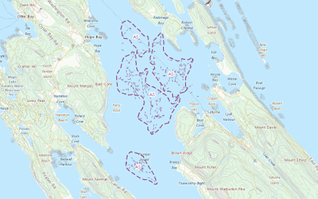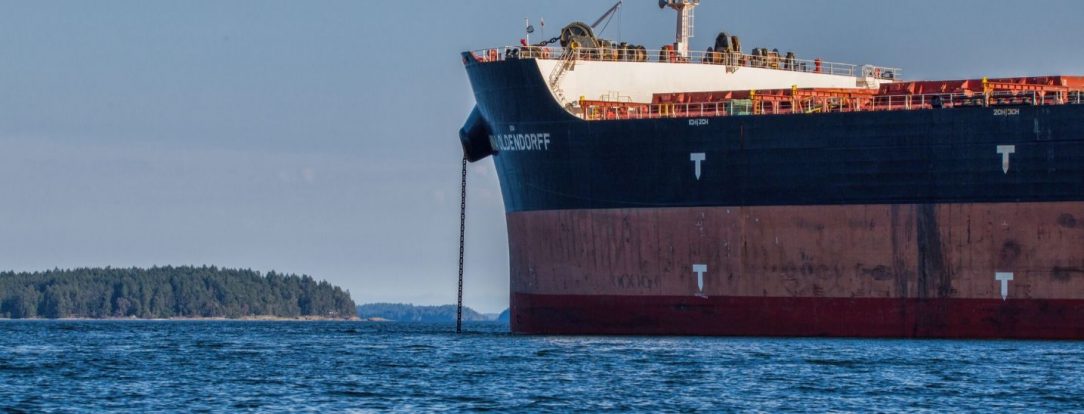
Recent seabed mapping published by the Geological Survey of Canada exposes extensive scarring at freighter anchorages in the Salish Sea such as this scouring in Plumper Sound, the body of water surrounded by Mayne, Saturna and the Pender Islands. This is only one of the areas within the Southern Gulf Islands and adjacent Vancouver Island used by the Port of Vancouver as an “overflow parking lot” for large commercial freighters arriving too early for their loading of bulk goods such as grain and coal.
In 2022, over 500 ships anchored at one of the 33 designated anchorages in these waters, an ecologically sensitive area containing over 300 species at risk.
As these vessels swing on their anchors in wind and currents, anchor and chain abrasion can destroy seabed ecosystems, create suffocating sediment clouds, and disrupt seabed carbon storage. This in addition to their negative environmental impacts—air pollution from onboard diesel generators, excessive noise and lighting, discharge of ballast and other pollutants and, most worrisome, the ever present danger of anchor dragging in storms that could result in a collision or grounding.
The location of these anchorages contradicts the mission statement of the Port of Vancouver: “…ensuring safety, environmental protection and consideration for local communities.”
The anchorages would be unnecessary if the Port of Vancouver employed a vessel arrival system as used at ports elsewhere and addressed its shortcomings in proper infrastructure and supply chains.
A full map of Salish Sea anchor scour marks from anchorages that were sampled is available here:
Open Maps Data Viewer (canada.ca)
And the full report is available here:
https://doi.org/10.4095/331346


